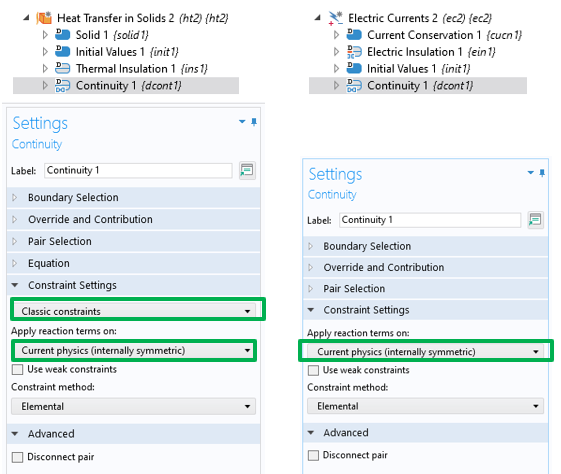Thermal stresses are an important design concern for many engineering applications. When temperatures change, materials can deform or warp leading to the build-up of internal stresses even without the presence of external constraints which can further increase thermal stresses. Modeling and simulation can calculate the deformations, stresses and changing contact pressures using thermal-structural interaction techniques. When the source of the temperature changes in the system is electrical heating, the flow of electric currents can also be included in predictive models.
AltaSim has conducted many of these types of analyses over the years using COMSOL Multiphysics. AltaSim’s modeling workflow includes rigorous model validation checks that sometimes lead to the need to modify default physics conditions for accurate results. One recent project highlighted the need to adjust default advanced settings to provide an accurate transfer of electric current and heat flux across assembled parts.
The default settings for the thermal and electrical pair continuity constraints are not appropriate when solving for displacements in the same study step, e.g., when solving for intimately coupled thermal expansion effects. In this special case, we recommend switching the ‘Apply reaction terms on:’ constraint setting to ‘Current physics (internally symmetric)’. For Heat Transfer in solids, this means first changing to ‘Classic Constraint’ mode rather than ‘Discontinuous Galerkin constraints’ mode. The images below show the appropriate settings for both convergence and accurate connection of dependent variables across the assembled parts.
In addition to our consulting services, AltaSim trains engineers to develop simulations using COMSOL Multiphysics. We teach a wide range of courses. Our next class on applying Structural Mechanics when creating simulations in COMSOL Multiphysics is September 20-23, 2022.

